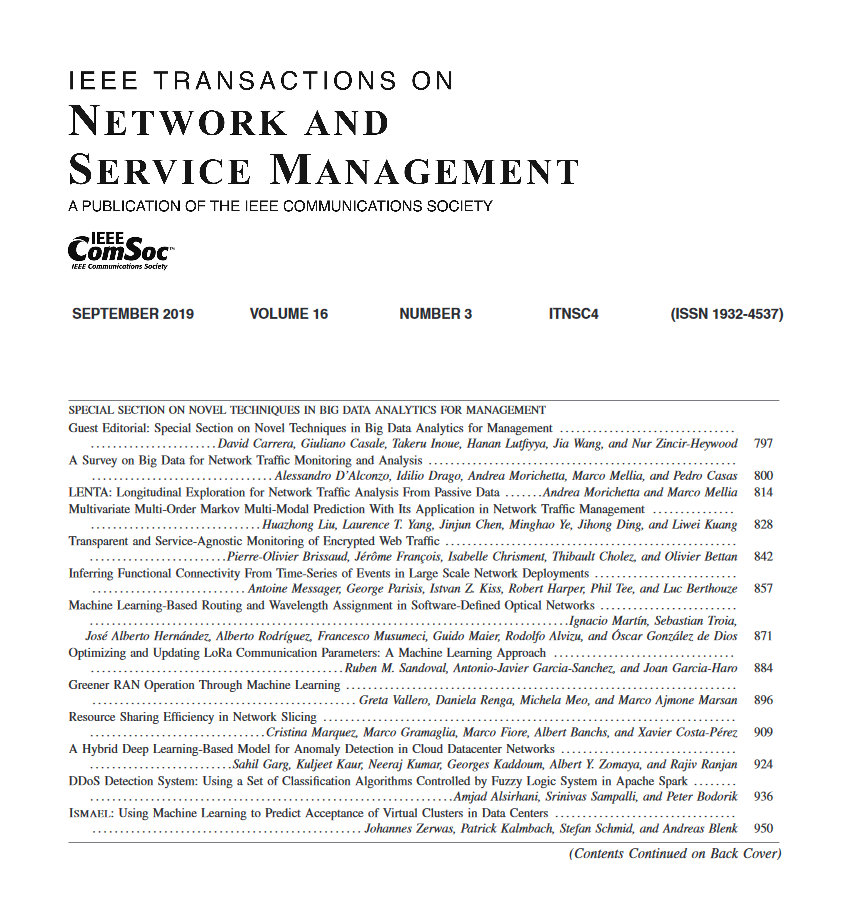QoE-Aware Joint Visual and Haptic Signal Transmission With Adaptive Data Compression for Immersive Interactions in Human Digital Twin
IF 5.4
2区 计算机科学
Q1 COMPUTER SCIENCE, INFORMATION SYSTEMS
IEEE Transactions on Network and Service Management
Pub Date : 2025-04-07
DOI:10.1109/TNSM.2025.3558358
引用次数: 0
Abstract
Human digital twin (HDT) is envisioned as a system interconnecting physical twins (PTs) in the real world with virtual twins (VTs) in the digital world, enabling advanced human-centric applications. Unlike optimizing the quality of experience (QoE) of users in single-modal signal transmission for conventional services, users’ QoE in multi-modal signal transmission required by HDT is difficult to guarantee. To tackle this, we study an optimization of QoE in multi-modal transmission, focusing on joint visual and haptic signal feedback transmissions from VT to its PT, for providing immersive interactions in HDT. To evaluate a synthesized performance of visual and haptic experiences, we design a comprehensive QoE model, taking into account video quality, continuous video quality switching rate and average haptic feedback error. Then, to maximize QoE with a guarantee on synchronization between visual and haptic signal transmissions, we dynamically optimize bandwidth allocation, bitrate and rendering mode of the video, and haptic signal’s compression threshold. To this end, we propose a deep reinforcement learning based algorithm, called VisHap. Furthermore, we build an HDT multi-modal interaction platform for collecting an authentic dataset, and by using it, we conduct experiments, showing that VisHap is not only feasible but also outperforms the counterparts.基于自适应数据压缩的qoe感知关节视觉和触觉信号传输,用于数字孪生体沉浸式交互
人类数字孪生(HDT)被设想为将现实世界中的物理孪生(pt)与数字世界中的虚拟孪生(vt)互连的系统,从而实现以人为中心的高级应用。与传统业务优化单模态信号传输中用户的体验质量不同,HDT所要求的多模态信号传输中用户的体验质量难以保证。为了解决这个问题,我们研究了多模态传输中QoE的优化,重点关注从VT到PT的联合视觉和触觉信号反馈传输,以便在HDT中提供沉浸式交互。为了评估视觉和触觉体验的综合性能,我们设计了一个综合的QoE模型,考虑了视频质量、连续视频质量切换率和平均触觉反馈误差。然后,为了在保证视觉和触觉信号传输同步的前提下最大化QoE,我们对视频的带宽分配、比特率和渲染方式以及触觉信号的压缩阈值进行了动态优化。为此,我们提出了一种基于深度强化学习的算法,称为VisHap。此外,我们建立了一个HDT多模态交互平台,用于收集真实数据集,并通过它进行了实验,表明VisHap不仅可行,而且优于同类产品。
本文章由计算机程序翻译,如有差异,请以英文原文为准。
求助全文
约1分钟内获得全文
求助全文
来源期刊

IEEE Transactions on Network and Service Management
Computer Science-Computer Networks and Communications
CiteScore
9.30
自引率
15.10%
发文量
325
期刊介绍:
IEEE Transactions on Network and Service Management will publish (online only) peerreviewed archival quality papers that advance the state-of-the-art and practical applications of network and service management. Theoretical research contributions (presenting new concepts and techniques) and applied contributions (reporting on experiences and experiments with actual systems) will be encouraged. These transactions will focus on the key technical issues related to: Management Models, Architectures and Frameworks; Service Provisioning, Reliability and Quality Assurance; Management Functions; Enabling Technologies; Information and Communication Models; Policies; Applications and Case Studies; Emerging Technologies and Standards.
 求助内容:
求助内容: 应助结果提醒方式:
应助结果提醒方式:


